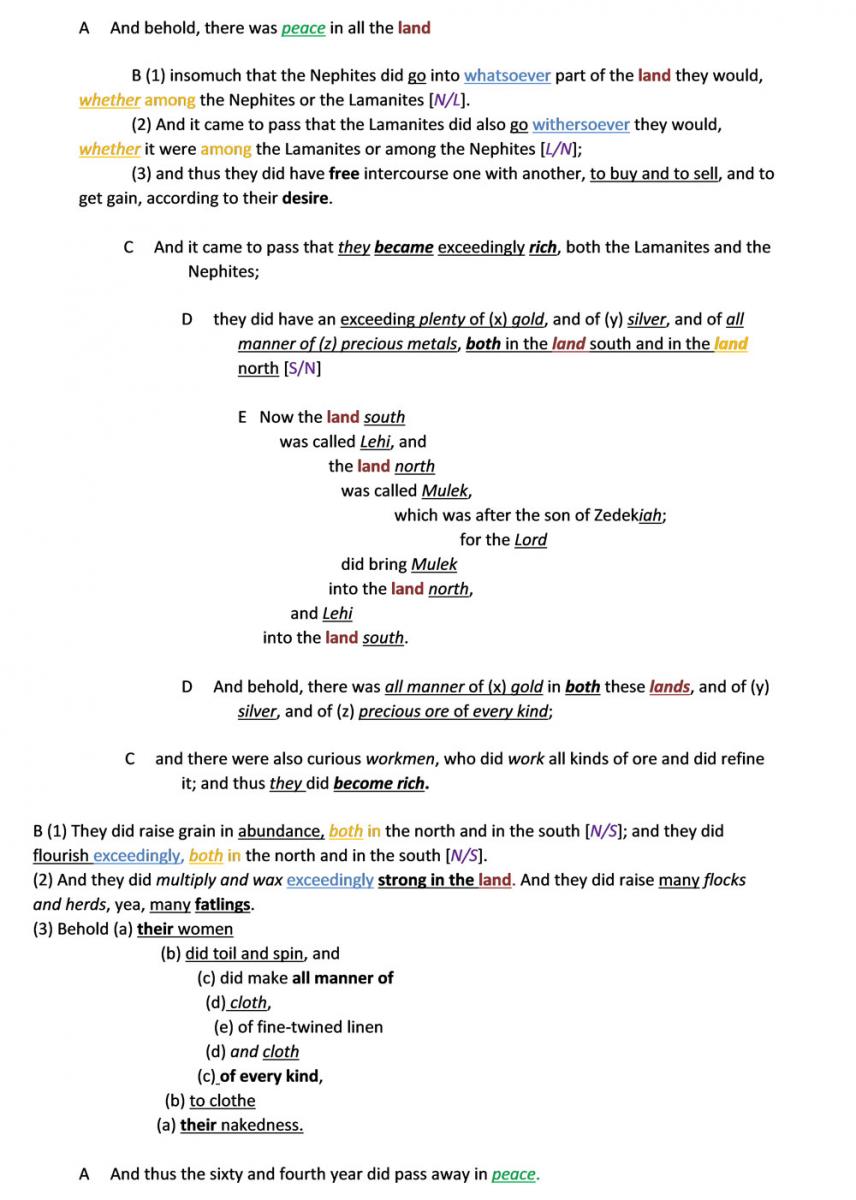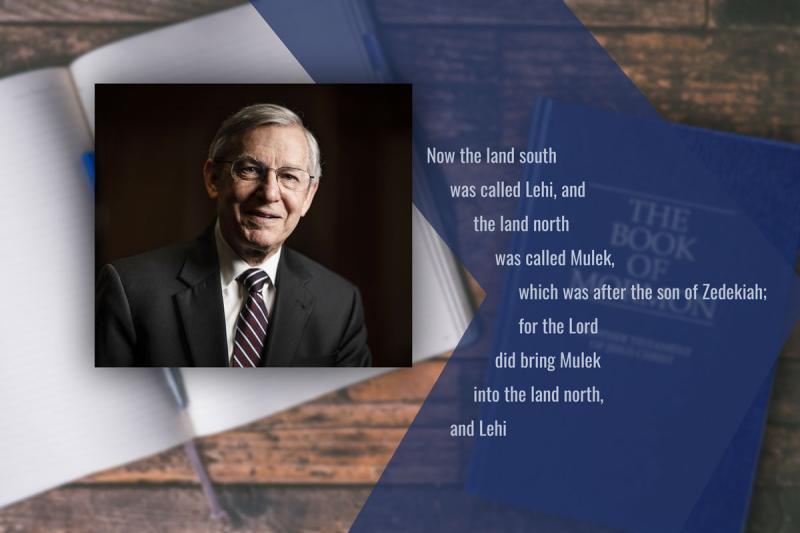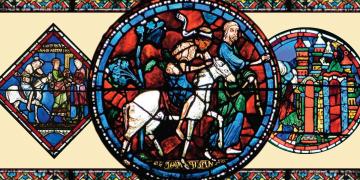You are here
The Chiastic Report of the 64th Year of the Reign of the Judges in Helaman 6:7-13
As the study and appreciation of chiasmus continues to expand and move forward, one of the very best examples deserves a more detailed analysis. First discovered in 1987 and published as a FARMS Update that year, this composition is remarkable in several ways. This text, which is the complete report and only information given about the 64th year of the reign of the judges, is exceptional in many ways. The full text lays out as follows:

At a glance, this annal is compositionally phenomenal. And upon minute scrutiny it becomes even more remarkable in many ways. It ranks among the best examples of chiasmus in the entire Book of Mormon. Consider all of the following:
First, just in terms of an overall perception, this annual report is skillfully and beautifully executed. To the common observer, as well as to the expert analyst, it is readily apparent that words, phrases, and ideas that appear in the first half are repeated with precision and balance in the second half. This chiastic pattern is clearly evident. This text exhibits both fine quality and admirable length. Its supporting flanks are orderly and expressive. Its 10-element turning point is precise, concise, meaningfully and climactically focused.
Second, this chiasm unquestionably conforms to natural literary boundaries. It begins right after the preceding date marker, “and thus ended the sixty and third year” (Helaman 6:6); and it ends with its own date similar marker, identifying this as the complete report for this year, “and thus the sixty and fourth year did pass away in peace” (Helaman 6:13). The report for the 65th year begins immediately in Helaman 6:14. No clearer set of boundaries for the beginning and ending of this chiasm could be hoped for.
Third, the climax or turning point is found right at the center, Part E. There are 142 English words in the first half of this text, and 149 English words in the second half. The climax focuses on the eponymous names of Lehi and Mulek, as well as on the royal theophoric and divine names of Zedekiah and of the Lord.
Fourth, this chiasm displays a thoroughly well-balanced symmetry. Parts A and A’ are equal in length and in their focus on peace. Parts B and B’ each have three balancing subparts, dealing with the unprecedented openness of travel and commerce between the lands north and south, among Nephites and Lamanites, through commerce and agriculture, on the parts of men and women. Parts C and C’ are equally brief, attesting that they “became rich.” Parts D and D’ are of equal length, speaking of all manner of gold, silver, and ore in both lands. This impeccable literary balance instantiates the political balance remarkably achieved here between these two lands and groups of people.
Fifth, a strong chiastic structure should be based on major keywords, phrases, or themes. This criterion is easily satisfied here, mainly because almost every word is involved in this structure. Among others, the following key words are evenly and sequentially distributed: peace, north, south, land, rich, exceedingly/exceeding, all manner, gold, silver, precious, land, Lehi, Mulek. This structure does not depend upon minor parts of speech or vague phraseology.
Sixth, this chiasm manifests little, if any, extraneous repetition or divergent materials. One might wonder about the introduction of the work of women in the third section of Part B’, but that domestic work sensitively complements the work of farmers and herdsmen in B’, the “curious workmen” in C’, and is a counterpoint to public commerce in B. In addition, the work of the women is wrapped up in a brief sub-chiasm that consciously serves to bring that one mention of the women into closer parity with the three previous mentions of the work of the men.
Seventh, a strong chiastic order should typically not compete with any other strong literary forms within the passage. In this case, the chiastic substructure seems to be the only literary form operating within this scribal record.
The foregoing features conform substantially and fully to all of the main criteria, according to the exhaustive research of Neal Rappleye, that are commonly agreed upon by virtually all scholars who have articulated criteria for evaluating and analyzing the presence and strengths or weaknesses of chiasms in Hebrew texts. Rappleye’s definitive work, “Chiasmus Criteria in Review,” has now been published and is readily available.1
My own list of criteria for identifying the presence of chiasmus—also covered by Rappleye—goes on to include a few other additional subjective factors which, when present, enhance even further the appreciation of the skill of the author who composed the chiasm. For example, concerning the purposeful use of chiasmus, I ask: Is there an identifiable reason to employ chiasmus? In this case, the answer is clearly, yes. Chiasmus accentuates contrast and harmonizes a reversal. Here the scribe writing this annual report wants his readers to celebrate the reconciliation between these two competing nations which had been in conflict with each other for five centuries. No better literary form exists to accomplish this purpose than chiasmus with its typical equilibrium of inclusion.
Length can be an added strength. The longer the chiasm, the more remarkable and intentional it appears to be. With a dozen points in its main structure, the pattern in Helaman 6:7-12 is well above normal.
Its density is also respectable, since there are no extraneous asides or excurses. The key terms in this passage are dominant, and none appear to be mavericks repeated outside the pattern.
In the end, the beginning and ending of this structure combine to provide a sense of return. Peace was clearly the main underlying condition that allowed for all the interchange, correspondence, commerce, and prosperity enjoyed by these two previously walled-off lands. This text begins with peace and ends with peace.
Indeed, the report documents the great changes that occurred during the 64th year involving prosperity, free travel, and peace between both the Nephites and Lamanites. Significant trade and peace treaties must have been entered into by the rulers of both lands in order for this kind of peace and prosperity to have occurred, since before this time, restriction on travel was the norm in Nephite society, as is evidenced by Mosiah 7:1; 8:7; 28:1; Alma 23:2; 50:25; and Helaman 4:12. In this case, the peace was made possible by the conversion of many Lamanites by the miraculous missionary works of Nephi and his brother Lehi, Nephi having previously served as the Chief Judge in Zarahemla for ten years. Official decrees of this type are known in the ancient Near East in the form of misharum edicts that typically proclaimed freedom for slaves and granted "equity" for the land. And treaties between neighboring rulers, operating on parity with each other, were often used in the Hittite world to create legal and commercial partnerships between neighboring kingdoms or districts.
And from a practical perspective, in addition to marking this unprecedented moment in Nephite history, using chiasmus here would have guarded against additions to or deletions from the text, since any alteration would be strikingly apparent. And perhaps for that reason, it may well be that other reports from antiquity were written in chiastic form. For example, the Mesoamerican Chilam Balam of Chumayel, like Helaman 6, not only focuses chiastically on the migration of the people into the land they now occupy, but also similarly draws particular attention, at its center, to a word‐play on the land's name, as J. E. S. Thompson has noted.2 The use of chiastic structures in Mayan inscriptions, including some creation and origin accounts, has recently and innovatively been discussed by Kerry Hull.3
Aesthetically, there is a certain beauty and artistic quality in this text which otherwise could merely have been a fairly routine entry into the Nephite record for the 64th year of the reign of the judges. Apparently the contemporary Nephite historian knew the chiastic form well. I am inclined to believe that he had been trained to recognize the structure of Alma 36 and many other such passages. He then chose to use chiasmus to record in the annals of his people the developments that had occurred during this extraordinary year. I think he was very pleased with the results of his elegant craftsmanship.
The deliberate integrity of this text can also be quantified by counting the number of times its words and phrase appear. In running a quick check, and knowing that the number 10 was an important number in Hebrew mysticism (the Holy of Holies being 10 cubits by 10 cubits by 10 cubits), it is interesting (accidental?) that the word “land” appears 10 times in this text (9x as a singular, and 1x return to both lands unified). The word “they” also appears 10 times, always referring to the Nephites and the Lamanites together, always in the active nominative case, never appearing as “them” (2x “they would,” 7x “they did,” and 1x “they became”).
The four words “both,” “all,” “south” and “north” each appear exactly 5 times.
The three words “Nephites,” “Lamanites,” and “exceedingly” (or “exceeding”) appear 4 times.
Three triplets appear: 1x “buy, sell, get gain”; and 2x “gold, silver, precious metals/ore.” And likewise three doublets appear: “multiply and wax,” “flocks and herds,” “toil and spin.” Receiving double expression are the words “peace,” “rich,” “called,” “Lehi,” and “Mulek.” These would appear to be conscious repetitions.
And while twenty generic words are used only once, two others that appear only once are “Zedekiah” and “Lord.” It is most remarkable that the center of this chiasm involves these two singular words. At the very apex, the words "Zedekiah" and "Lord" stand parallel to each other, which is intriguing since the Hebrew word for "Lord" constitutes the theophoric suffix ‐yah or -iah at the end of the name "Zedekiah." Thus, this chiasm actually works even better in Hebrew than in English. The double occurrence of this divine element right at its center emphasizes the point that it was the one and only Lord Jehovah who had brought both Lehi and Mulek to the new world. No stronger point of political unity and peace can be found than that shared point of origin.
The closer I have looked at this passage in Helaman 6, the more impressed I become with it. I remember when I first noticed this chiasm. It was in March, 1987, and I was so excited by it that I published a report about it immediately in May, 1987 as a FARMS Update. That then became available in the 1992 compilation Reexploring the Book of Mormon, and then as Chart 133 in Charting the Book of Mormon in 1999.
I mention the timing of this discovery here in conclusion because I remember well the late Wednesday night when this chiasmus came to my awareness. At that time, I was the bishop of the BYU 36th ward, and students needed interviews with the bishop especially as the end of the winter semester was approaching. All the other students scheduled for that night had come punctually on time. One in the middle of my list of appointments had still not shown up. It was getting late. I was tired, and I needed to teach my Honors Book of Mormon class the next morning. I decided to wait, as long as it might take. I opened my copy of the Book of Mormon and sat on the couch in the apartment lobby and began to read the next day’s assignment, which happened to spill over from Helaman 5 into Helaman 6. This text in Helaman 6:7-12 separated itself from the surrounding text as a single annual report, a treasure left by an unnamed but very diligent ancient scribe. Its chiastic structure, especially at the center, was unmistakable. When the young man sheepishly stuck his head into the lobby, I welcomed him. I told him that the Lord had just blessed us both by him being a little late. I shared with him what I had just found. We had a great interview, in spite of his initial worries. I hope this text has meant as much to him and to numerous other lovers of the Book of Mormon as it has meant to me all these thirty-three years later.
Read John W. Welch Notes for Helaman 1–6
- 1. Neal Rappleye, “Chiasmus Criteria in Review,” in John W.Welch and Donald W. Parry, eds., Chiasmus: The State of the Art (Provo: BYU Studies and Book of Mormon Central, 2020), 289-310, on line at byustudies.byu.edu.
- 2. Personal correspondence to John L. Sorenson, June 13, 1970, referring to pp. 4‐6 of Ralph Roys's translation (see paperback edition, University of Oklahoma Press, 1973).
- 3. Kerry Hull, “Mirrored Poeticity: Chiastic Structuring in Mayan Languages,” in Chiasmus: The State of the Art, 257-288.
Subscribe
Get the latest updates on Book of Mormon topics and research for free








